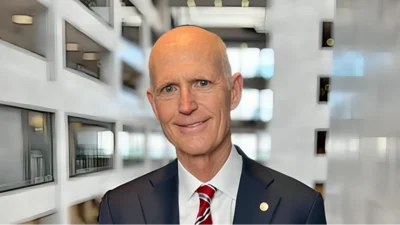LAS VEGAS - Anthony Graham has served as an intern for the Nevada Site Specific Advisory Board (NSSAB) since late 2016. The NSSAB tasked him with communicating the Nevada National Security Site (NNSS) programs and history to students at the University of Nevada, Las Vegas (UNLV).
Graham, a Ph.D. candidate in history at UNLV, must log 120 hours of onsite work with the NSSAB under his one-year internship. He must accomplish several projects, including research and a semi-monthly informational digital bulletin.
Graham attends NSSAB meetings, where he provides insight from the university and youth in Las Vegas. He will present on the NNSAB to the UNLV student body.
EM conducts soil and groundwater cleanup and other work on the NNSS. The NSSAB is comprised of volunteers who represent Nevada stakeholders and provides independent advice, information, and recommendations on EM’s activities at the NNSS.
We recently spoke with Graham to learn more about his internship.
Where are you from? What brought you to Las Vegas?
I’m from Pacifica, California, a small coastal city near San Francisco.
After receiving a Master of Arts degree from California State University, East Bay, I began looking into doctorate programs across the country. UNLV’s history program interested me because of its professors’ focus on the American West, technology, and the environment. The history program also looks beyond academic history and into the world of public history, including museum work, community outreach, and historic preservation. UNLV’s history program was a perfect fit for me.
What drew you to working with the NSSAB?
I first heard of the NSSAB from my advisor, Dr. Andrew Kirk. I had been researching public memory and commemoration of atomic testing in southern Nevada, which drew me into studying the NNSS. My interest grew through attending public tours and seeking out locations in Las Vegas with connections to historic nuclear testing. When I heard about the NSSAB it seemed like a natural fit, as it combined environmental concerns, historic preservation and community outreach.
Tell us about your thesis. How does this internship relate to your studies?
My thesis focuses on the environmental history of the Mojave and Great Basin deserts in the 20th century and how changing technology shapes both our perceptions of the land and how we interact with it in our daily lives.
This internship deals directly with environmental conditions that are the product of land use in the desert. The NSSAB provides input from the community on how best to monitor and clean up the NNSS, which gives us insight on how environmental perceptions have changed since historic nuclear testing took place.
How do you plan to get university students more involved with the NSSAB?
There are two main challenges to getting university students more involved with the NSSAB. The first factor is the knowledge gap; many do not know about the NSSAB, and many of our students do not know about the NNSS or the functions that it serves. Also, much of what they do know about the NNSS comes from Hollywood films. Getting the facts straight can be a long process.
The second challenge is to give them the confidence to participate with the NSSAB. The thought of cleaning up after historic nuclear testing can seem like a daunting process, and students tend to be afraid to take risks for fear of looking uninformed. My goal is to inform students about the NSSAB and how it works, so they understand that they can be a valuable part of the process. The newsletter is the first step in reaching out; I will also be visiting classes in different departments to build interest in the program.
What was it like touring the NNSS? What was your favorite part?
The NNSS is a unique and special place. It is one part science museum, one part wilderness preserve, yet also still very active with the various missions of the Department of Energy. The experience of going to the location in which hundreds of nuclear devices were tested can be both awe-inspiring and other worldly, such as in the case of the Sedan Crater. The remaining structures from nuclear testing delighted the history nerd in me as I quickly recognized the Apple II houses, News Nob, and the bunkers and bank vault at the Priscilla site. Entering Icecap felt like stepping into 1992 and served as a wonderful museum piece.
To me the ultimate highlight of any trip to the NNSS is seeing how life has continued to endure and thrive. I have been on three tours and each time we have encountered a herd of antelope at some point. Though environmental damage that resulted from nuclear testing can be seen, for the most part the NNSS is thriving and provides an uplifting image for the future.
Source: U.S. Dept. of Energy, Office of Environmental Management








